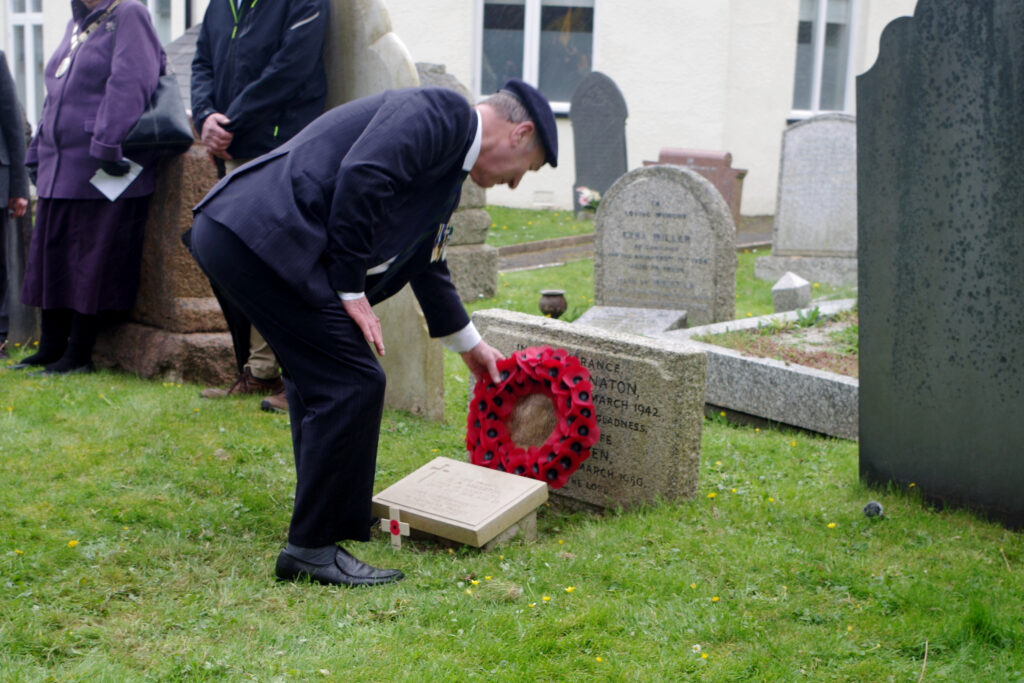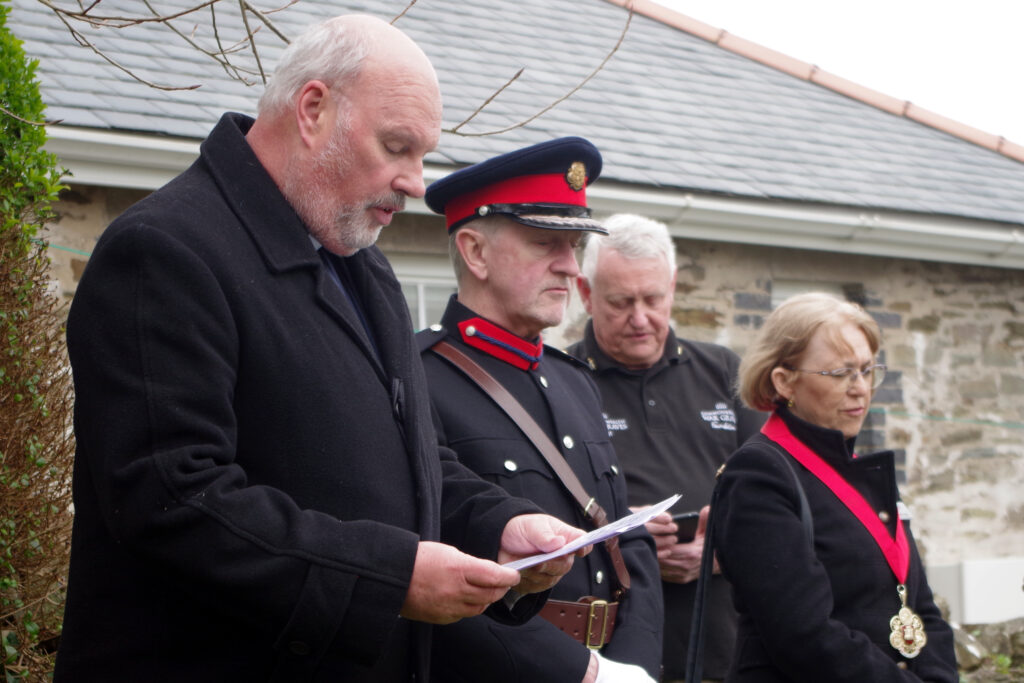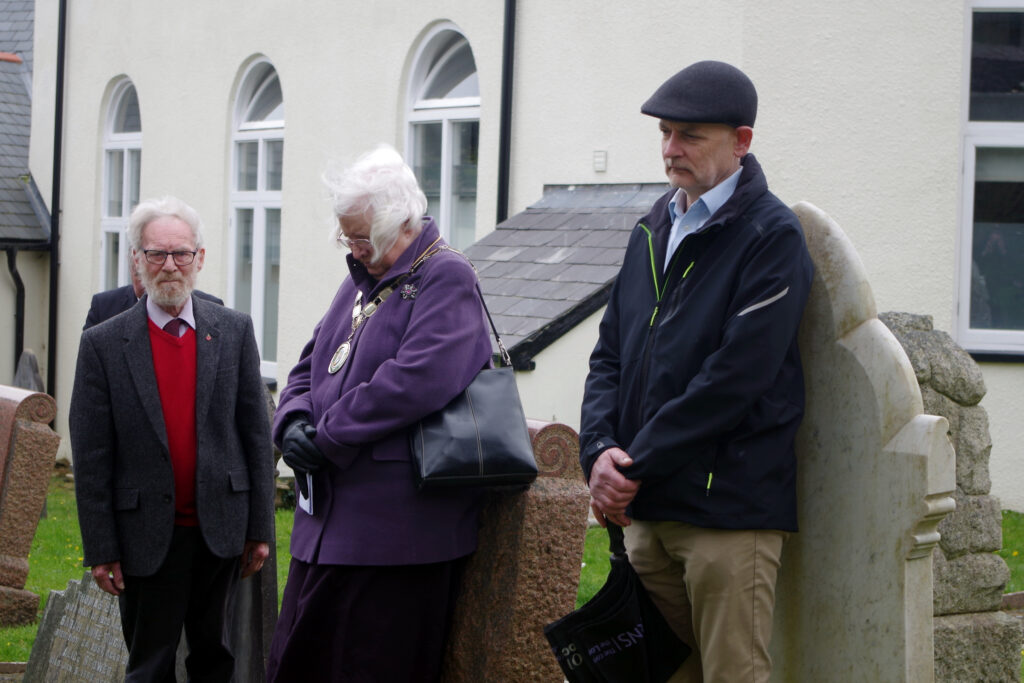
SOUTH West NUJ branch was represented at a ceremony to honour a former journalist and war correspondent who is buried in a North Devon graveyard.
In a moving ceremony, a lone piper made a slow march into the cemetery of Braunton Methodist church, leading a standard bearer from the Royal British Legion and the Deputy Lord Lieutenant of Devon.
Th Last Post was sounded as the parish priest, Rev Stephen Caddick, led the short service in memory of George Aubrey Manaton.
George Manaton began his career in his home county of Devon before moving to London and progressing from work at the London News Agency – likely to have been a demanding training ground – to a job for The Times.
He must have been good – jobs at The Times were notoriously hard to win, and he was paid the princely salary of £3 10 shillings a week – a good wage for the time. His union subs were one shilling a week, or 5p.
George Manaton joined the newspaper in May 1914. When war broke out in the August of that year he was sent to France and sent back reports as a special correspondent from the Channel posts.
Unfortunately none of his pieces carried a byline – which was common practice at the time, hence staff at today’s Times have been unable to identify any articles which he wrote. Two of his modern-day colleagues were at the service, however, and a report appeared in the paper.
The ceremony on April 4th was to commemorate the installation of a new gravestone, installed by the Commonwealth War Graves Commission after it was found that the original one was missing.
George Manaton did not survive the war. After filing reports from France, he returned to England and enlisted in the army the following year. But while undergoing officer training with the Inns of Court officer training corps – one of the oldest regiments in the British army, dating from Tudor times – he contracted tuberculosis, then known as consumption.
His Times obituary records: ““To the deep regret of his colleagues he was unable to resume work in Printing House Square, and, after spending some months in a sanatorium, he went home to Braunton” where “he awaited the inevitable with the cheerful courage of a fine character”.
George contributed once again to local newspapers in Devon but the disease was to kill him in July 25th, 1918, aged 25.
Major Barrie Corfield, the secretary of the Inns of Court and City Yeomanry Association, travelled from Kent to attend the ceremony to honour his ertswhile comrade. Also attending was Mark Parkhouse, a Deputy Lord Lieutenant of Devon, one of the King’s representatives in the county, who read an exhortation.
SW England branch chair Paul Breeden and branch member Kate Pearce represented the union. Paul gave interviews to the BBC Spotlight programme and to BBC Radio Devon.
The fact that George Manaton was an NUJ member was discovered by Peter Clarke, himself an ex-soldier and now a Devon volunteer for the Commonwealth War Graves Commission. He realised that Manaton was entitled to a CWGC memorial because he had died of a disease contracted while on military service. He ensured that a new stone was commissioned, and organised the ceremony, inviting around 20 participants. His researches included papers held in the local library which showed that Manaton had paid his one shilling subs to the NUJ – leading to the invitation to the union to take part in the ceremony.
Paul Breeden told the BBC Spotlight programme, the daily news show for Devon and Cornwall, that it was frustrating that so little is known of George Manaton. Not only can none of his published work be identified, but none of his family members can be traced. He had five siblings, one of whom, his brother Frederick, died of wounds he received at Thiepval in 1916.
It is hoped that the publicity for the new memorial will lead to family members coming forward to shed more light on George Manaton, who was referred to in his Times obituary as “a journalist of great promise”.

